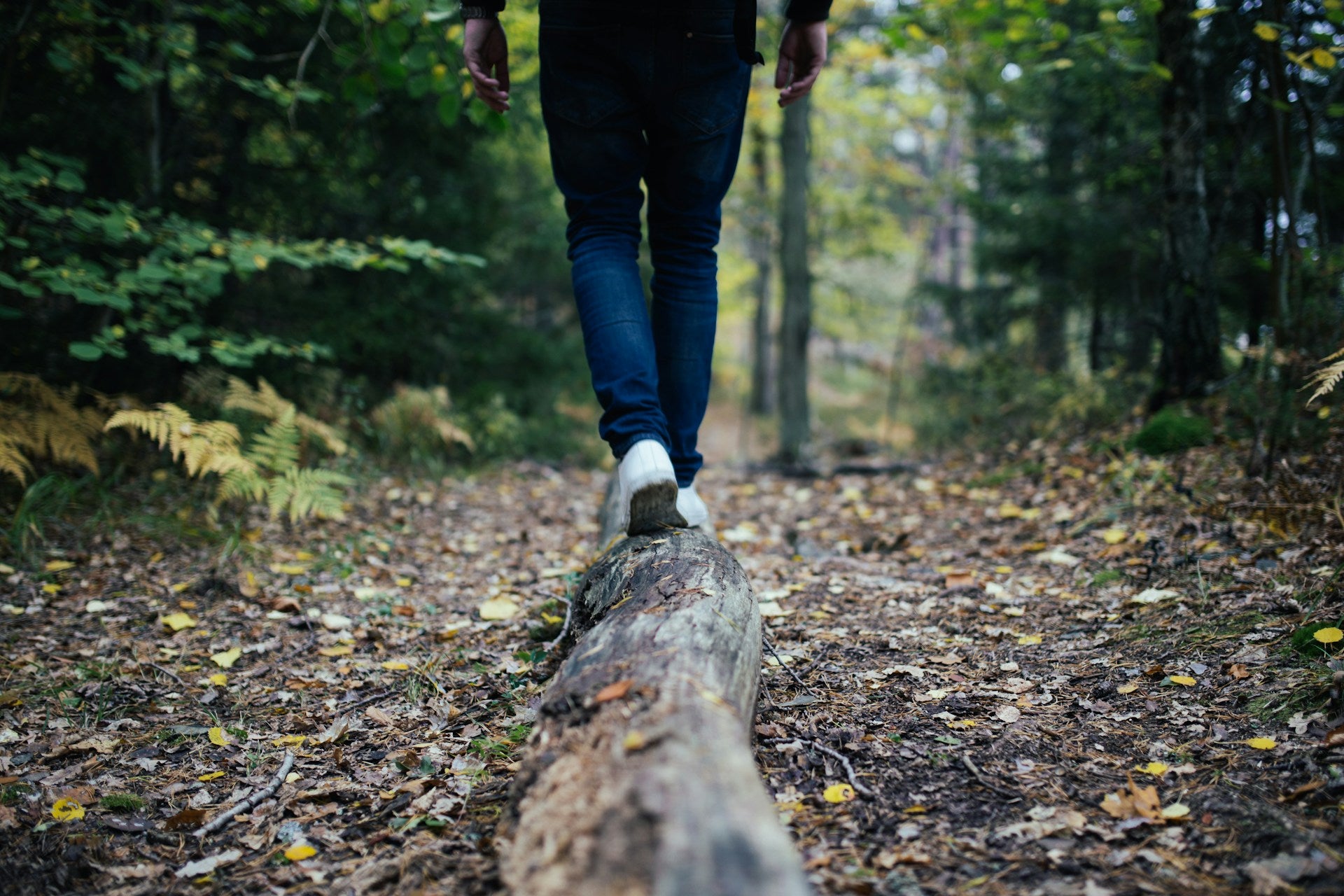The typical American adult spends 93 percent of their time indoors: 87 percent in buildings being constantly bombarded by digital stimuli and work pressure, and six percent in vehicles dealing with rush hour, bad drivers, and so on. When there's no break, such stressors can put you in a state of constant fight or flight, negatively impact your sleep, compromise your immune system, and more. Fortunately, there's a simple way to address all these issues: getting out in nature. Keep reading to see how doing so in three different environments can help you combat stress, wind down, and refresh your body and mind.
Paying Attention to Little Details
Dr. Qing Li is an associate professor at the Nippon Medical School in Tokyo. He is one of the world’s leading experts in shinrin-yoku, the Japanese term for what’s commonly called forest bathing in the West. Li’s research has demonstrated how a single walk in the woods elevated the number and activity of participants’ NK cells – the Navy SEALs of the immune system responsible for neutralizing cancer and other threats – for up to 30 days.
In his book Forest Bathing, Li shared that even short bouts of nature exposure can also quell anxiety and worry. He explained that visual patterns called fractals are found in waves, lightning, coastlines, tree branches, and many other things outdoors. “These infinite patterns of nature are scientifically proven to relax us, no matter how complicated the pattern may become,” Li wrote. He went on to cite the work of Richard Taylor from the Materials Science Institute in Oregon, who found that “looking at these kinds of natural patterns can reduce our stress by as much as 60 percent.”
Commenting on his research in an Around the O article, Taylor explained how the human mind responds to such stimuli. “As soon as we look at nature, it triggers a cascade of automatic responses,” Taylor explained. “Even before we’ve noticed what we’re looking at, we’re responding to it.” He went on to explain the potential value of incorporating similar fractal patterns as are found in the wild into workplaces, homes, and communal urban settings. “At our biological core is the desire to feel relaxed; it’s an essential need as a human,” Taylor said. “We can derive so many benefits from the stress-reducing quality of nature and we can measurably increase people’s well-being by reintroducing nature to design and architecture.”
Next time you’re out and about, you can tap into the calming power of fractals by carefully studying a snowflake, pinecone, flower, or anything else with a repeating pattern. After a few moments, your brain will begin to downshift. Taylor has found that this reflexive response not only busts stress but can also help reenergize you by reducing mental fatigue.
Going from Red to Blue
In Wallace J. Nichols’s book Blue Mind, neuroscientist Catherine Franssen describes Red Mind as an “edgy high, characterized by stress, anxiety, fear, and maybe even a little bit of anger and despair.” This state is a defense mechanism designed to keep you aware of perils in your environment and ready to either fight or escape from them. “But today, non-life-threatening stressors activate the same biological systems, meaning the same physiological response that we use to run away from a lion is activated when the mortgage bill shows up in the mail. As we encounter little stressors throughout the day, our stress hormones remain high and keep us in an agitated place. Thus, our Red Mind stress response is turned on all the time, repeatedly, every day.”
She goes on to contrast this survival mode with the depression and hopelessness of a Gray Mind. Nichols, a marine biologist researcher at the California Academy of Sciences then explains the title of his book as a “state of water-associated peace” that’s defined by a feeling of “calm centeredness.” There’s plenty of evidence that demonstrates the Blue Mind effect of being near or in a lake, river, or ocean. For example, a study published in the journal Health and Place studied residents of New Zealand’s capital city, Wellington. The researchers concluded that “Higher levels of blue space visibility were associated with lower psychological distress.” In other words, those who could see the ocean were less anxious.
Another group of researchers from the University of Exeter in the UK extracted data from the comprehensive Health Survey for England to find out what impact being close to the ocean had on people’s mindset. While nobody in the compact country lives more than 70 miles from a coastline, they found that the nearer someone’s town or city was to the seaside, the greater the benefits to their mental wellbeing became. Speaking to ScienceDaily, Dr. Jo Garrett, one of the trial’s co-authors, suggested that regular exposure to blue spaces created a kind of mental “protective zone,” particularly among lower income families. Of course, you might not be able to simply relocate near an ocean to get similar benefits, but even a short getaway could lift your spirits and reduce your stress levels. A study published in Environmental Research concluded that walking on a beach for as little as 20 minutes made participants feel better. “Short walks in blue spaces can benefit both well-being and mood,” the researchers concluded.
Seeking the Savanna Effect
As we’ve already seen, escaping among trees and to bodies of water can provide the kind of stress-busting effects you’re looking for. But over years of research into the complex relationship between humans and the natural world, biologist Clemens G. Arvay has come across some different and less celebrated kinds of landscape that can have similar mental health benefits. In his book The Biophilia Effect, Arvay explains that our modern world has made us ever-vigilant and looking for threats around every corner – whether that’s in the real or virtual realm. He stated that a combination of the ancient reptilian parts of the brain and the limbic system is triggered into keeping us in a state of heightened vigilance by “urban life with noise and traffic, burdens at work, deadlines and performance pressure, or feelings of inadequacy.” If this isn’t buffered by relaxation, “the natural circuits for acute stress then fail” leading to chronic issues.
Arvay states that the remedy for such issues is not to unrealistically try to disentangle ourselves from the pressures of our daily lives because they’ll always be present to some extent. Rather, he recommends longer and more frequent doses of nature exposure. One of the ways to do so is to seek out what he calls “the savanna effect.” You might have only ever seen this type of landscape in its purest form overlaid with the soothing tones of David Attenborough on a BBC nature program. But Arvay suggests that other forms of the savanna can be found elsewhere than Africa’s Serengeti plains, and that meadows, groves, and even city parks can provide similar, stress-relieving perks.
Why is such a setting so relaxing? It could be because savanna was the kind of locale sought out by our hunter-gatherer ancestors. Arvay also cites research showing that while there are plants growing on a savanna, they aren’t dense enough to hide predators or other threats, which allows us to transition out of self-protective survival mode. So try seeking out anywhere outside that “has green surfaces, covered in grass, on which bushes and trees grow,” as Arvay describes them. If you take your time and let your eyes wander, you’ll soon start to feel renewed and refreshed.





















